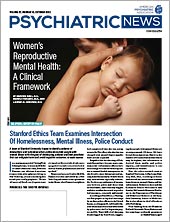Before the pandemic, adolescents were spending an average of four to six hours a day on screen-based devices. After the COVID-19 pandemic began in 2020, some studies estimate that youth started spending upward of eight hours a day in front of a screen.
That shift to greater amounts of time spent online coincided with heightened racial tensions in 2020, and a study published in the Journal of the American Academy of Child & Adolescent Psychiatry found that between March and November 2020, Black youth experienced increased online racial discrimination and reported poorer mental health immediately after.
“In 2020, the killings of Breonna Taylor, George Floyd, and other Black Americans at the hands of White civilians and law enforcement sparked an uprising against racial injustice that was met with fierce opposition from white nationalists and domestic terror groups in the United States,” wrote Juan Del Toro, Ph.D., a research associate at the Learning Research and Development Center at the University of Pittsburgh, and Ming-Te Wang, Ed.D., a professor of psychology and education at the University of Pittsburgh. Those groups became more prominent in online spaces as youth simultaneously relied on those spaces to connect with peers during the pandemic.
Del Toro and Wang recruited 602 self-identified Black and White adolescents (58% Black, 42% White) between the ages of 12 and 18. For two weeks in March, April, May, and October 2020, the participants completed daily surveys to determine whether they had experienced online racial discrimination and to assess their mental health symptoms. Rates of participation varied from month to month, with 44% participating in the March surveys and 57% participating in the October surveys. The researchers collected a total of 18,454 daily assessments.
The authors included a single item from the Online Victimization Scale in the surveys to determine whether the participants experienced online racial discrimination: “Over the past 24 hours, did anyone say or post mean or rude things about you because of your race or ethnic group online?” Participants were also asked about symptoms of depression, anxiety, stress, and exhaustion/tiredness through the Profile of Mood States Questionnaire and a single item from the Daily Stress Scale.
Across all four survey periods, 45% of Black youth reported at least one instance of online racial discrimination, and on average, Black youth experienced two incidents of online racial discrimination. The percentage of participants experiencing online racial discrimination increased from 8% during the first survey period to 22% during the final survey period, and the authors noted that this increase was not solely explained by increased time spent online. In contrast, reporting of online racial discrimination by White youth ranged from 8% in the first survey to 11% in the last.
Black adolescents who experienced online racial discrimination also reported increased depressive symptoms, anxiety, and stress both on the day they experienced the discrimination and the next day, relative to days when they did not experience discrimination. No discernible effect of online racial discrimination emerged for White youth, the authors noted.
“This study compounds what we already know, unfortunately,” said Michelle Durham, M.D., M.P.H., vice chair of education in the Department of Psychiatry at Boston University School of Medicine. “It is difficult even for adults to hear someone say negative things about you based on the color of your skin. If you are a young person who is already in the developmental stage of wanting to fit in, build identity, gain independence, and think about forming new relationships, it is extremely damaging to read those things about yourself and people who look like you.”
Nicole Christian-Brathwaite, M.D., pointed out that a 2019 study in the Journal of Adolescent Health had similar findings. Among Latinx and African Americans aged 11 to 19 years old, more frequent experiences of traumatic events online (such as seeing a person of their ethnic group beaten, arrested, or detained or seeing a viral video of a Black person getting shot by a police officer) were associated with higher levels of posttraumatic stress disorder and depressive symptoms. Christian-Brathwaite is a child, adolescent, and adult psychiatrist and chief medical officer of Array Behavioral Care, which provides telehealth services.
“Often when we think about trauma, we associate it with physical, emotional, or verbal abuse. People don’t always realize that racism is its own form of trauma,” Christian-Brathwaite said. “Experiences of racism are stressful and, over time, become toxic stress.” This impacts children’s ability to cope and their developing brains, she said.
In working with youth, Christian-Brathwaite emphasized the importance of meeting them where they are and not minimizing or dismissing the importance of their virtual lives. “We can understand the important role social media has while giving kids the tools they need to navigate it,” she said. “Give them the language they need to discuss what they are facing and acknowledge how painful some of their experiences have been.”
Durham emphasized the importance of modeling behaviors for adolescents. “Parents are constantly modeling the behavior they want their children to have, and that is a really powerful tool to encourage the healthy use of screens,” she said.
There is a variety of ways to minimize exposure to racism online, Christian-Brathwaite said, such as turning off the feature that automatically plays videos on social media websites to stop viral videos of police shootings, for example. Youth may also need help learning to become aware of how their minds and bodies are reacting to what they see, so they know when to take a break from the screen. “We have to be willing to give them some control and compromise while keeping them safe,” Christian-Brathwaite said.
Finally, Christian-Brathwaite emphasized the need to screen for racial trauma. “We have the screening tools necessary to address a person’s experience of racism, and we must use them,” she said. “Avoiding race is avoiding a part of who that person is.”
Del Toro and Wang’s study was supported by grants from the National Science Foundation and the Spencer Foundation. ■


